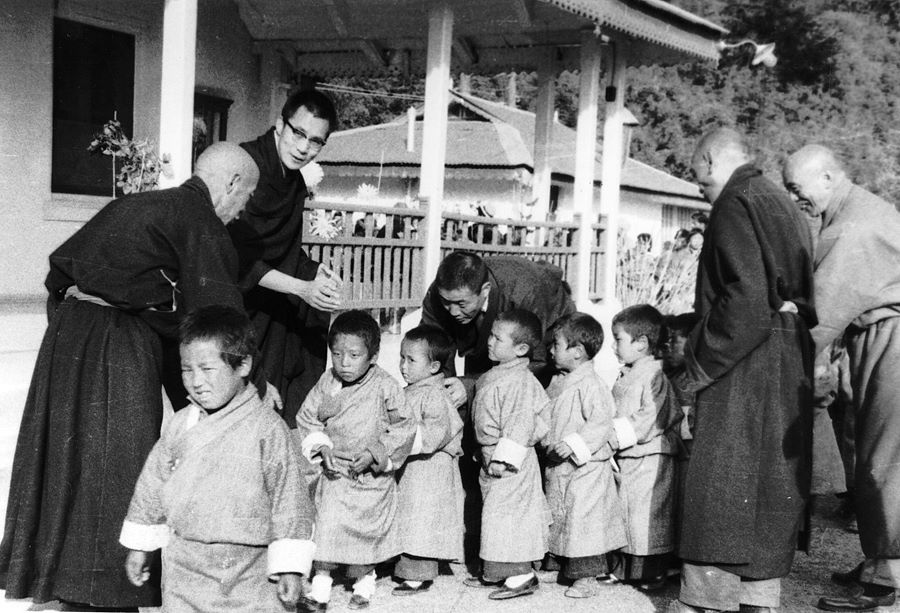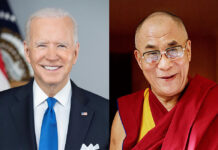
Prof. Madhu Rajput* sees in the Tibetan people’s decades-long vibrant sustenance in India in the backdrop of the historic tragedy of losing their homeland a lesson in the art of staying happy and leading the way.
“There is a saying in Tibetan, ‘Tragedy should be utilized as a source of strength. No matter what sort of difficulties, how painful experience is, if we lose our hope, that’s our real disaster”, said the Dalai Lama leading his people into exile. In that hour of greatest tragedy in 1959, hope was their only savior. They clang to it with all their might, and it gave them immeasurable strength to overcome innumerous challenges in their path. It wasn’t easy to survive in a completely alien land. India, though welcoming, was herself grappling with abject poverty, trying to erase the scars of bondage for two hundred years. Both could feel the pain of losing independence and the inextinguishable longing for it. Thus, despite external differences in language, dress and climate, hope and struggle became their bonding thread. Tibetan refugees and Indian State both were beginning from the scratch.
A small yarn of that thread, I went to inquire into some depth the strength of this relationship. Tibetans, a handful of people, close to a hundred thousand, not only survived but commanded respect from the whole world, save one. They fascinated me, with their tenacity, humility and unique characters of piety and compassion preached by Buddha. Despite the uprooting from their homeland, and exposure to the strong winds of globalization, they consciously worked to retain their unique culture. Being in a democratic India, herself a crucible of varied ethnicities and religions, helped. Freedom of choice and toleration came naturally to India. Thus the foundation was strong. Despite the initial hesitation on the part of Pt. J.L. Nehru pre-1959, once India extended shelter to Tibetans, they were made to feel at home. Whatever meager resources India had, were open to Tibetans as well as Indians alike.
The peculiarity of this relationship, however, is revealed in the context of other refugees in India. When compared, Tibetans emerge as the most organized, prosperous community. They have succeeded in erecting a whole infrastructure for themselves, including a democratic government-in exile. Tibetan schools, hospitals, restaurants, markets dot the landscape of India. They neither remained secluded from their fellow inhabitants, the Indians, nor let their uniqueness be diluted. How has this harmony and balance been achieved and maintained so long, without any major skirmishes? In today’s world of protectionism, where extreme nationalism is on the rise, and nationalists resent ‘others’ sharing their resources, how Tibetans and Indians have remained peaceful?
The credit goes to the leadership of both the nationalities. While India granted land to Tibetans to reside and construct schools, Tibetans under guidance of His Holiness the Dalai Lama, realized that strength is in being united. Rather than letting their community scatter, they stayed together. Rather than becoming a burden on India, they nurtured their human resource through education and contributed to India’s growth. It was not a one-sided extraction of resources, like a parasite, but an enriching symbiotic relationship. Tibetans brought back to India what despite being its birthplace, she had lost in 12th century: Buddhism. By preserving their culture, they not only added another vibrant hue to the myriad colours of India, but also contributed in revenue generation through tourism. They didn’t create any ruckus about their constitutional right to be fed and supported by the Indian state. Rather, by whatever economic activities possible, be it agriculture, sweater selling or handicraft making, they tried to be self-reliant. Neither was there any issue raised about perceived domination or discrimination.
However, similar to any other relationship, this also had certain unfulfilled expectations. During my survey in 2016-17 in Dehradun, Mussoorie and Dharamshala, it emerged that while immensely grateful for India’s support, Tibetans expected a higher pitch in support of ‘Free Tibet’. They wanted India to raise the matter at international platforms and pressurize China to consider their realigned demand for ‘Genuine Autonomy’. The more politically mature, however, understood India’s compulsions to protect her national interests also. On the other side, still a large number of Indians remain unaware of their Tibetan counterparts’ history, and consequent struggle for freedom, their reason for seeking exile, and their dilemma of double identities.
Though His Holiness describes himself as the longest staying guest of India, his people do feel the pain of being stateless. Their international movement is hampered by lack of a passport. The Registration Certificate that India issues to them at times fails to fill the gap. The idea of acquiring Indian citizenship has sprouted and is in its initial throes, with both the parties trying to sort out the modalities involved. Meanwhile, both Tibetan community and India struggle to generate gainful employment to their youth, both are experimenting with encouraging entrepreneurship through government support.
Though a small community in exile, Tibetans hold a vast treasure. The treasure of the ever enchanting land of Tibet. The fragrance of their nomadic past, and the promise of a hopeful future. The essence of a culture steeped in compassion, the wisdom of keeping eternal hope. A symbol of resilience, these handful of people stand as a representation of human will in the times of despair and destruction. India and rest of the world could learn the art of staying happy from the revered monk who leads the way, not only of his own people but the humanity itself.
* Prof. Madhu Rajput is Head of Western History Department of Lucknow University, Uttar Pradesh, India, and is working on a Govt. of India sponsored Major Project on Tibetan Women.






A very insightful and balanced article! Thoughtfully reflective of the persistence and perseverance of Tibetans in adverse circumstances. Their tradition of living in harmony with nature and man is reflected beautifully. Beneficial for policy makers and scholars in understanding the challenges of diaspora.
Excellent article. Provides true and balanced insight.
Excellent Article.The position of the Tibetan Diaspora–the circumstances in which they migrated to India,the attitude of the Host country,the inherent qualities of the Tibetan that helped them to be a useful immigrant community to India,their aspirations,their attempts to re-create their country and preserve their culture and propagate their philosophy– has all been explained in a very crisp and lucid manner.